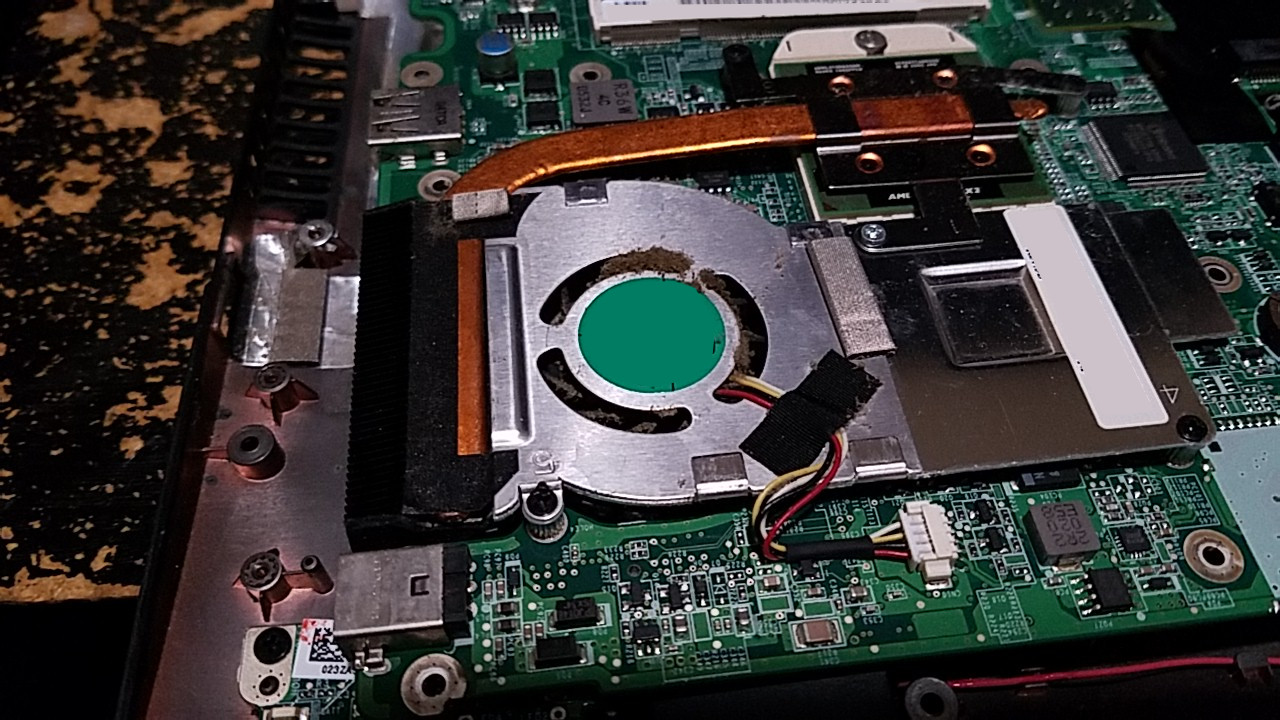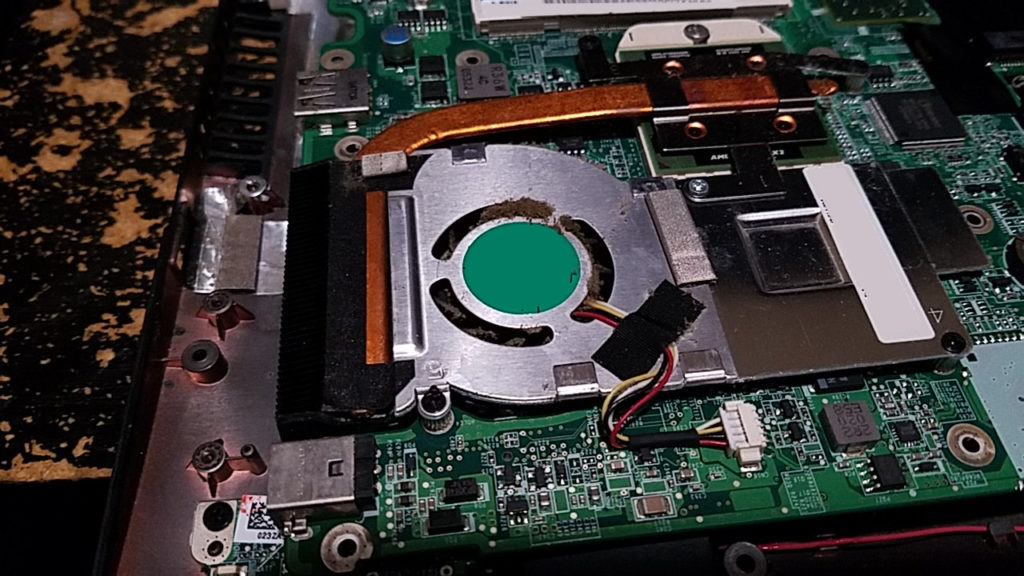A relative of mine reported that their home health aid was having issue with a laptop that was overheating and intermittently crashing or shutting off altogether. As far as computers or electronic equipment goes, that’s generally indicative of some airflow issue. Such matters are usually straightforward enough for me to at least diagnose, if not outright fix, so I offered to take a look.
The system I was handed was a Gateway ZA8 netbook. Depending on the manufacturer, these systems usually don’t get much higher than $300 in price. There only but so much that can really go wrong on systems like these before any repair quote would get close enough to the price of a system to not make said repair cost-effective.
I started by booting up the system and attempting to replicate the issue. I could hear the fan running, but upon placing my finger up to the exhaust vent, I could definitely feel that the air coming out was a bit warm. Clearly the fan was working, but the warmed exhaust further pointed to my first guess that there is some dust inside that the fan is having to turn harder to push air through.
The Bug Hunt
Once I got to the desktop – The system was running Windows 7 Home Premium – I connected it to my network and surfed over to YouTube to run the video below:
This is my initial goto whenever I want to stress test a system and can at least get a clean boot and a network connection. I like this particular video because its not too long, has a high-res setting of 1080p that will pretty quickly put most systems through some paces, and its still enjoyable for me to watch. At least within the Arkham series, I think this is one of the best boss fights – If not the best – as its one that you can’t simply button-mash your way through. Its just challenging enough without being insurmountable.
The little laptop did manage to make it through this video, and about three of its follow ups, for the most part. I did need to scale the resolution down a bit, but I expected as much given that the hardware specs on most netbooks usually don’t lend themselves to processing HD anything too well. While the system didn’t outright crash, however, I did hear the fan spin up a bit more and the system started to struggle with consistently playing the video.
The Disassembly
I was satisfied at this point that I needed to get under the hook to see the fan itself. Maintain what is my usual procedure in these matters, I looked for a “Take Apart” video for the laptop. I came across and settled on the following one:
I find it beneficial to look over these videos at least once, before actually trying to do anything. That way, i’ll have an exact idea of what screws are where, if there are any hidden screws, and most importantly: How much force I should apply to certain parts of the frame – and in which directions – to minimize the chance that I will break tabs while separating things.
Once I got everything apart and got to the fan, I was greeted with the sight that you saw in the feature image and at the top of the article. Not as much dust as I was expecting to see, but then again it really doesn’t take much to get computers like these to start crying foul.
The Diagnosis
For this particular patient: I’m concurring with the owner that the issue is overheating due to bad airflow. Ill suggest a cleaning of the fan and vent with an application of some fresh thermal CPU paste between the heatsink and CPU. If you don’t know what that stuff is, its this stuff here:
The stuff comes in various mixes and syringe sizes. As with most things: The different makers each have their own hook explaining why theirs is better than others. I’m not outright trying to discredit any of them or their claims, but for my money and experience, they’re all pretty much the same and will get the job done equally well.
If you’ve made it this far down this page, thanks for reading. I’ll add an update after I spoken with the owner regarding my findings and recommendations for them.



